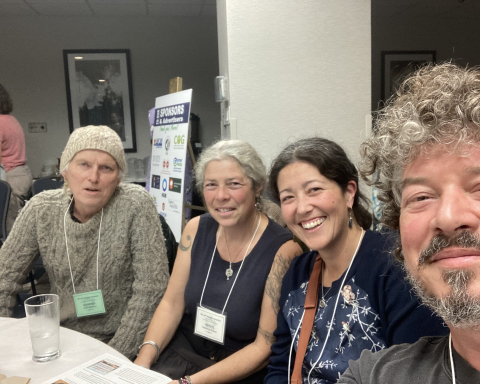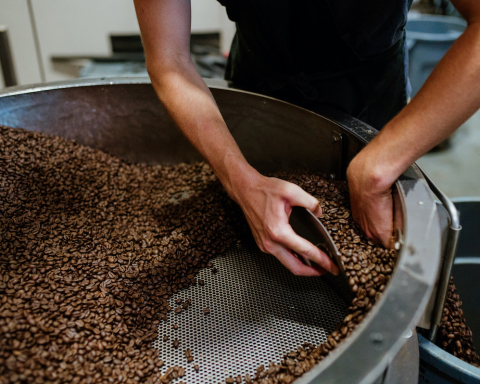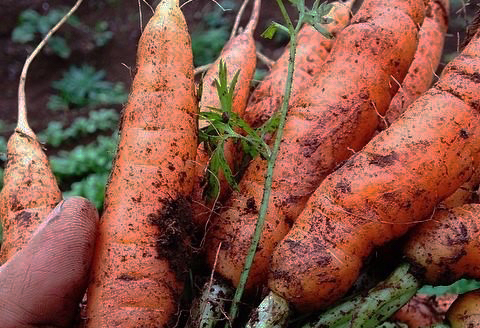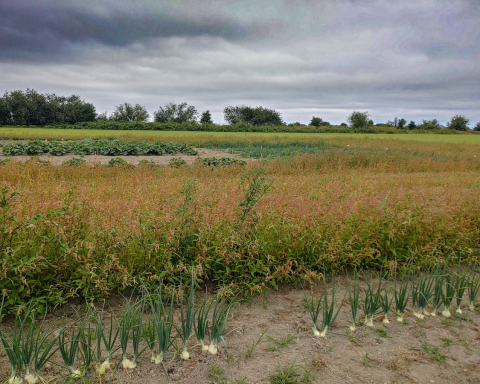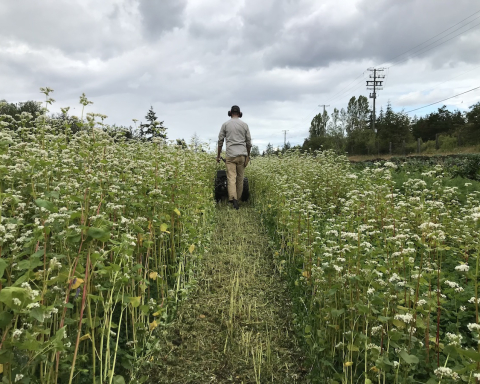By Darcy Smith
When Bill Balakshin’s grandparents planted their first (and only) crop of potatoes in 1925 on a parcel of land in Chilliwack, they could not have imagined what lay ahead for the farm. Ninety-eight years and four generations later, New Siberia Farms is a bridge from the past—and to the future. While the potatoes didn’t quite work out as planned, by the following year the land was home to dairy cows, and later a chicken hatchery. Today, New Siberia Farms covers about 90 acres total, with a handful of leased acres supplementing the home farm, and 55 dairy cows contributing to BC’s organic milk supply.
The founders of New Siberia, Andrew and Mary Balakshin, fled Russia, first landing in China before arriving in Canada in 1925 and getting right to work on the land. By 1926, they were shipping milk, and soon after started the chick hatching business that would be the farm’s bread and butter for the next two decades.
New Siberia weathered the Great Depression, which meant Bill’s father had to find work off the farm. “He sold fish on the side to keep the farm going,” Bill says. Particularly memorable in that decade was the ice storm of 1935—”the power was out for three months, making it difficult to do just about everything.”
During the war years, “there was bigger demand for food. The Depression was over, and there was more need for chickens, eggs, milk.” Then came the flood of 1948: “there was water all around and in the farm in the low areas.” They were told to evacuate, but didn’t know where to go with the chickens. Gambling on the dyke holding despite all signs pointing to disaster, they stayed put, and in the end, so did the dyke.
That same year, Bill’s parents took over the farm and started to increase cow production—luckily, because when the hatching market fell apart in 1962, they closed the hatchery and were set to focus on dairy. The farm has always dug into a sense of community, whether that was hosting workers in Bill’s parents’ house or, as they’ve continued to do, having a big party after field work, with food and beer, of course.
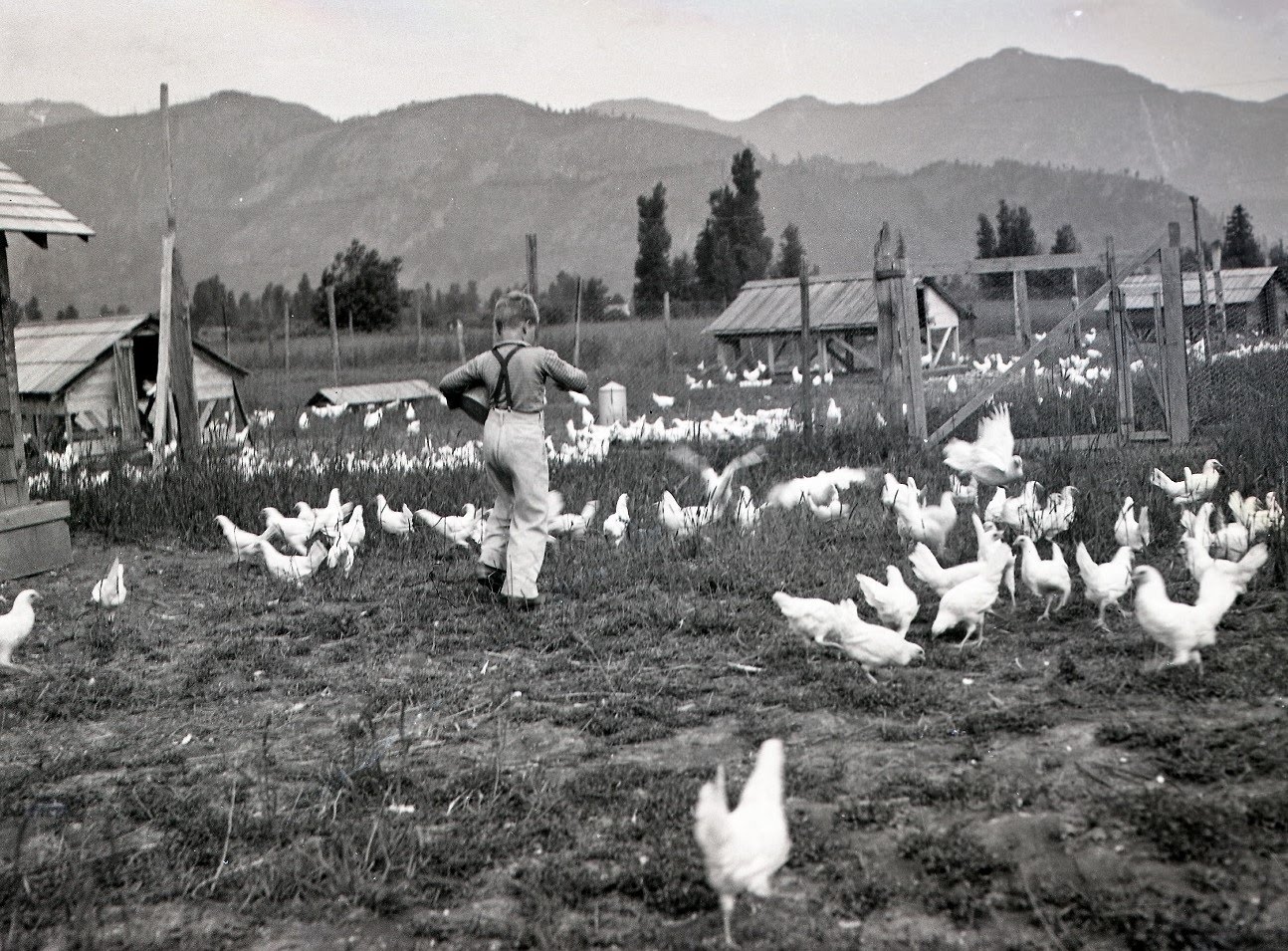
Bill started working full-time for the farm in 1971, and married Janice in 1981. They’ve been operating the dairy ever since. Dairy feels like second nature to Bill and Janice now. “It’s 365 days a year! If you’re not milking, you’ve got to get someone else to do it,” Janice says. “It keeps a regularity to life. Like any type of farming, it’s very time consuming, but rewarding being outside most of time.” Their son Tom, one of three, joined the farm in 2018. He describes his parents as “semi-retired, but of course they work much harder than that. Both of them actively take care of the farm like it is their fourth child and the milk ladies are their kin.”
Despite all the decades that have passed, “the farm is much the same today,” Janice says. They’ve been certified organic for five years, but “we were always interested in the organic approach. We followed all those same guidelines, but 20 years we ago didn’t feel there was access to organic feed.” Now, feed is much less of a “stumbling block,” as Janice describes it. “There is so much support around us. Organic is a much easier prospect than it was twenty years ago for a dairy farm.”
It was a “slow process” to get certified, Bill says. “We couldn’t get into the organic dairy program at first.” Dairy is supply-managed in BC, and “they’ll let in new producers when they can sell more organic milk—when we first applied, they had enough organic supply, but demand kept increasing.” Eventually, New Siberia was given quota.
The farm’s goals “have always been about animal welfare, whether organic or not,” Janice says. Being certified solidified that for them: “there was very little we had to change in our operation. That does give me validation we were doing things correct all the way along.” They use very few inputs, and their cows spend most of their lives outside. “We feel that their overall health is very good, and that goes back to a lot of the organic practices,” Janice says.
Bill is pleased to see that, “as more farmers get into dairy-ing, particularly growing alfalfa and having corn silage,” the overall quality of organic feed is improving. While they don’t feed much alfalfa, they’re always looking for something with just a bit more protein for the wet west coast climate. “Our cows aren’t worked too hard,” Bill says. “That’s the whole idea, they’re not stressed, they get lots of exercise.”
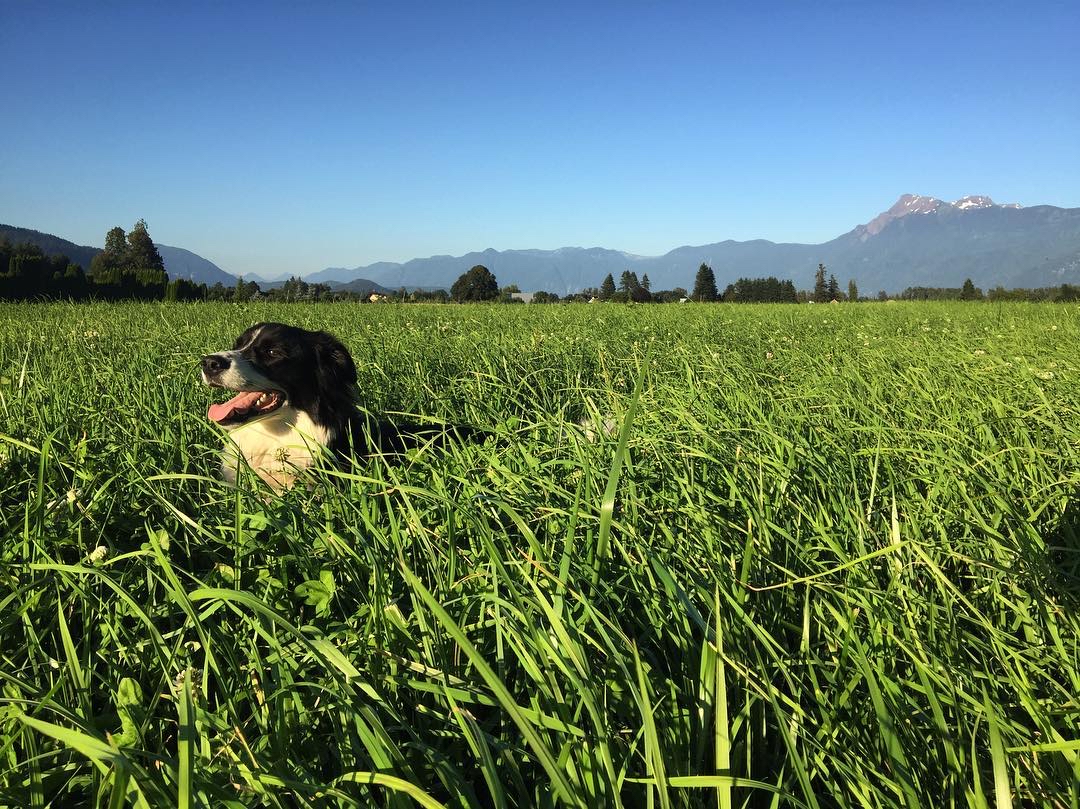
There are many perks to being a part of BC’s organic community. Apart from how nice it is to have a growing organic community in Chilliwack to lean on, Janice has been on the planning committee for the much-loved annual BC Organic Conference. “We have enjoyed meeting other people who are like-minded. It’s great to see perspectives also from other regions of BC,” she says. “Any opportunity to meet other farmers is good.” Janice appreciates that “under the umbrella of Organic BC, any farmer who is organic is pursuing the same goals as we are.”
As Bill and Janice step away from farm management, they’re able to focus more on stewardship practices. Always an integral part of the farm, riparian zones and wildlife are now taking central stage in daily life. “We live along a slough,” Janice says. “There were a lot of non-natives—blackberries, knotweed, all the nasty things that have been growing in this valley.”
Working with the Fraser Valley Conservancy, they have gradually planted two-thirds of their sloughs in native trees and shrubs. Janice notes that while it can be tempting to rush to convert to native plants, “the conservancies stress that even blackberry can provide a lot of cover for birds. You don’t want to just rip out everything, you want to do it in a structured way.”
Organizations such as the Fraser Valley Conservancy assist landholders with riparian zones and native plantings. When you sign-up to be a steward, you’re committing to look after plants, “but for the first few years, they will provide plants and come out and help. They’re always looking for more people to sign up,” she hints.
Janice is part of a campaign to preserve the sloughs. “Even if they’re running through farms, sloughs are a community source for enjoyment.” In collaboration with the Conservancy and other like-minded groups such as Friends of Hope, Camp River, and Bell Slough, she has assisted with riparian area planting days, bike rides, and more. “A slough is an important resource, and should be valued. Once people value it, they don’t abuse it.”
Improving riparian zones benefits everybody. New Siberia Farm has many plantings of trees and shrubs on the property, and are a frequent eagle landing site. “We’re creating a more varied environment, so it’s not just a monoculture,” Janice says. “You can see a difference already, just with the sloughs.”
The floods last November were “a wake-up call,” according to Janice. “Along the slough just west of our property, where people had planted grass instead of native shrubs, it was devastating how much land was lost from their backyards. People are now talking about the importance of making sure you have a ground cover of something, especially native plants. If this rain happens again, it is a protective boundary.”

Bill appreciates the carbon sink generated by having his fields in grass for so many years. The last few years, they haven’t plowed any fields, choosing instead to overseed. That way “we don’t disturb the ground,” he says. “The microbes in the ground are supposed to be quite beneficial. We don’t want to kill anything in the ground.”
From carbon sinks to riparian zones to happy cows, Bill and Janice are always looking for ways to do good for the ecosystem, right down to recycling the plastic from their round bales. For the past 15 years, they’ve been taking “the equivalent of five pickup loads” of plastic that’s been cleaned, dried, and compacted to Richmond, but more recently, they’ve been able to get the plastic picked up instead. “We feel it’s a farmer’s responsibility to pay the cost of this.” At only $15 per big tote, Janice says “it’s worth it, in that it’s not going to the dump. It would probably cost more to take it to the dump!”
What’s next for New Siberia Farms? Janice is keen to see what the next generation does with the farm. “I can see a future in small processors on farms, maybe specialty products. I think the consumer is looking for things like that. There’s always a possibility where you can branch out in the future, still with dairy and a small farm.”
Most importantly, the future comes back to the history of the land: “All through the generations,” says Janice, “the idea was that the farm exists for whoever is on the farm, to make profit but not to be sold. We’ve passed that on to our kids, ingrained in them that this is on the back of a lot of ancestors.”
It feels like Bill and Janice have been practicing being good ancestors for their whole careers. After all, as Bill puts it, “we’re looking after the land for the next generation.”
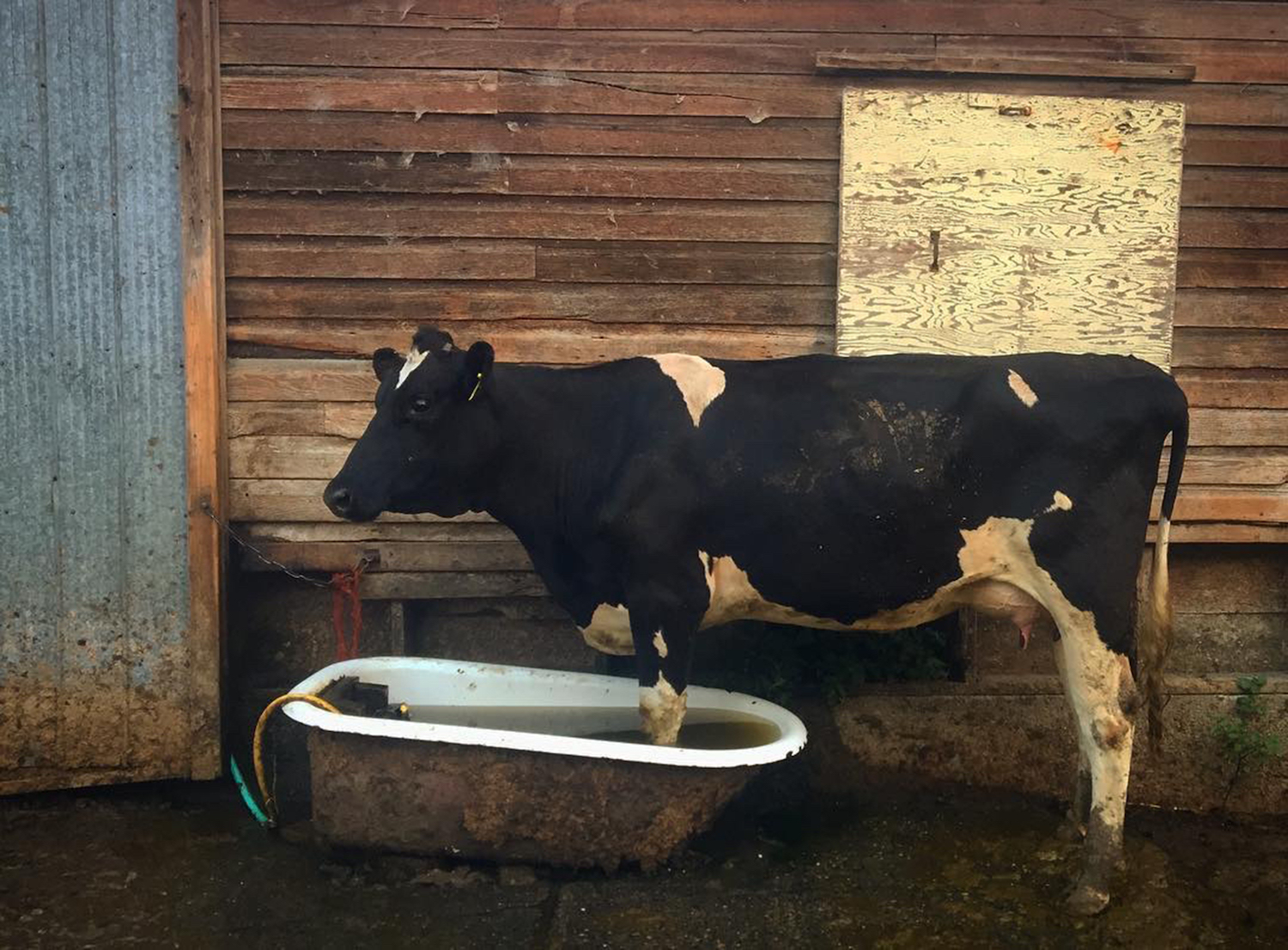

More information on riparian zones and sloughs:
fraservalleyconservancy.ca
watershedwatch.ca
Darcy Smith is the editor of the BC Organic Grower, and a huge fan of organic farmers. She also manages the BC Land Matching Program delivered by Young Agrarians.
Featured image: Cows grazing at New Siberia Farms. Credit: New Siberia Farms.



